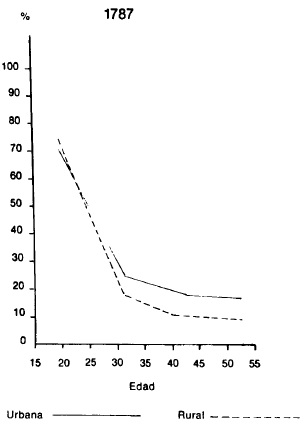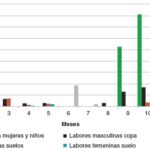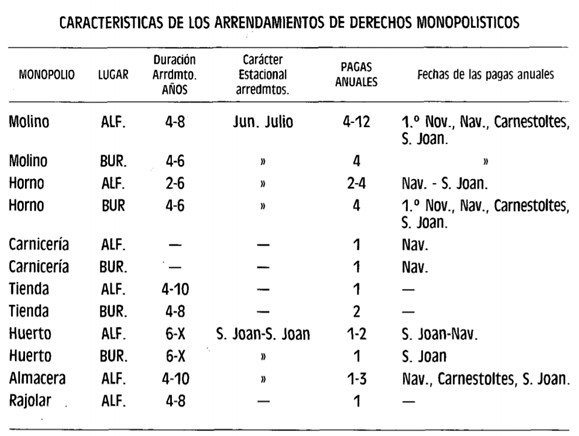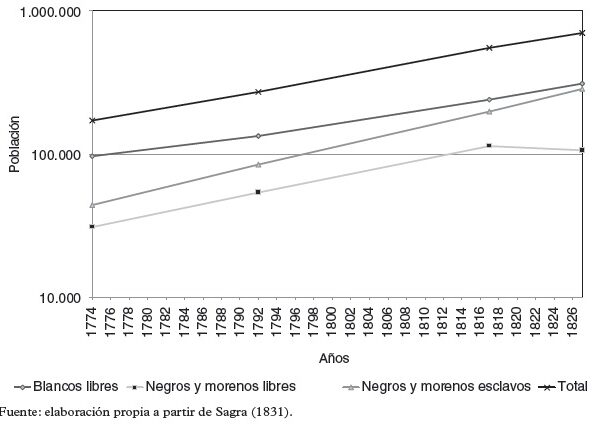
The demand for agricultural wage labour was highly seasonal, limiting the possibilities of converting it into a regular source of income. The development of agrarian capitalism contributed to this, which led to a productive specialisation in which the participation of women was lower than in the manufacturing and service sectors. The s’Estorell estate was located in the parish of Binissalem, at the foot of the Tramontana mountain range, and was the largest estate in the municipality and one of the ten most profitable on the island, with a valuation of 52,000 pounds according to the land registry of 1685. It covered 520 hectares, occupying the Almandrá valley up to the first peaks of the mountain range in the villages of Alaró and Selva. The work roles assigned to men and women could be broken when the concurrence of different work demands for different tasks in the same season demanded it. From September to January, female and child labour was absorbed in its entirety by the carob harvest (September) and later for the olive harvest (October-January). Once the olive season was over, women joined in January or February the spring weeding for cereals, generally in April and May. On the other hand, the men’s work began in August with the clearing of the olive groves (August-October) and continued from November to January with the digging of the olive trees, which was interspersed with the digging of the wheat fields. In February they began pruning the olive trees (February-April) and then grafting the olive trees (May). In summer, the demand for agricultural labour was concentrated on harvesting, although some labour was also assigned to forestry activities such as charcoal production. Seasonality was, however, a notable anomaly. Around 44% of the working days were contributed by labourers and 56% by day labourers. Female labour accounted for 75% of the working days, male labourers for 17% and child labour was absent, at least in the account books.
Collection: Graphics
Project: 2. Social and economic impact of technological revolutions in Europe., 3. Rural world and urban world in the formation of the European identity.
Chronology: XVII
Scope: Secondary Education, Baccalaureate, University
Link: https://www.historiaagraria.com/FILE/articulos/RHA80_jover_pujadas.pdf
Resource type: Graph
Format: Bar chart
Source: Jover–Avellà, Gabriel y Pujadas–Mora, Joana María, «Mercado de trabajo, género y especialización oleícola: Mallorca a mediados del siglo XVII», Historia Agraria, 80 (2020), pp. 37–69.
Language: Spanish
Date: 2020
Owner: Álvaro Romero González (Modernalia)
Copyright: © Gabriel Jover-Avellá, ©Joanna María Pujadas-Mora © Revista de Historia Agraria
Abstract: Months of the year in which the people of S'Estorel worked during the 17th century and what they were employed on
Image
Tags







